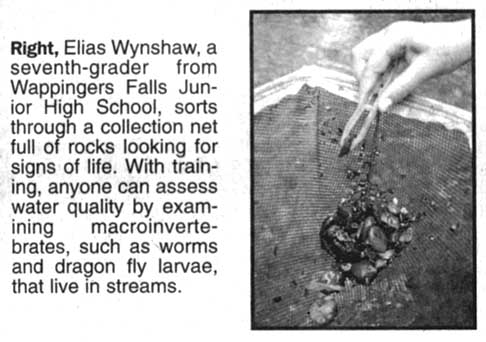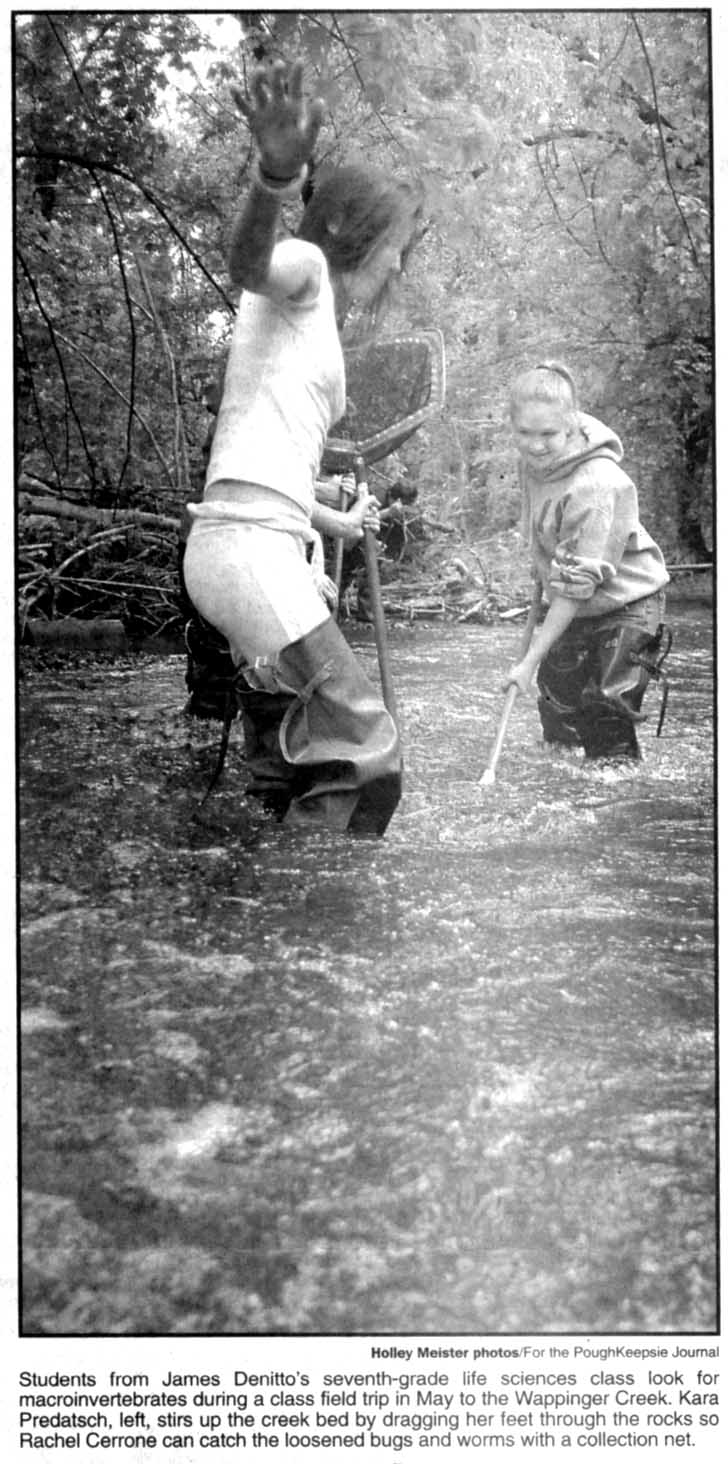
June 19, 2005
Watchers protect watersheds
Helpers cite threats, push for policies

DAN SHAPLEY, ENVIRONMENT EDITOR
By Martha Cheo
For the Poughkeepsie Journal

Watchers protect watersheds
Helpers cite threats, push for policies

DAN SHAPLEY, ENVIRONMENT EDITOR
By Martha Cheo
For the Poughkeepsie Journal



We all know how important water is, having learned in grade school our bodies are made up of about 75 percent water and that water cycles through the land, living things and atmosphere around us. But we often take water for granted.
We often don't think our actions on the land affect our rivers, lakes and streams. We don't consider that when it rains, the water "washes" the residue from all our activities into our waterways, particularly in urban areas where once-permeable earth is now covered with pavement. In these areas, water flows directly into rivers via storm drain pipes, carrying sediment and pollution off our roofs, driveways, parking lots and roads. And what about all those sewage treatment plants that discharge sewage — hopefully cleaned and treated — directly into streams? And what about all those things we eat, buy and use every day? Pesticides, fertilizer, industrial waste — there's a lot taxing our waters.
Fortunately for all of us water users and abusers, there are people who "think like a watershed," and get to know their local rivers. Citizen volunteers have learned the science of assessing the health of streams and the politics of how to keep them in good shape. These "river watchers" have helped clean up pollution, identify threats to stream health and inspire politicians to pass laws protecting waters.
"Residents and fishermen and women, acting as stewards of their water resources, have provided the oversight and information that led to the improvement of several egregious water quality violations," said David Burns, watershed coordinator for the Dutchess County Environmental Management Council. "In the Wappinger Creek, they identified a failing septic system that was leaking directly into the creek. In the Fishkill Creek Streamwalk Program, they identified several areas where sewer lines were either cracked or overflowing into the creek."
Some other examples:
Cicala and his students also joined up with Marist College students and neighbors to remove several tons of garbage from the Fallkill, including 3.5-tons of recyclable metals.
"Even people walking down the street became inspired to join the effort that day," Cicala said.
Why test rivers for antibiotics? Because of the widespread use of antibiotics, disease-causing bacteria are becoming resistant to the drugs. There is concern bacteria in rivers can become resistant as well. Because this is a new field, there is little knowledge about the effects this can have on aquatic ecosystems.
There are many other examples, including third- and sixth-graders from the Vails Gate School studying the Moodna Creek in Newburgh, volunteers working with government to protect the Plattekill Creek in Saugerties and high school students in Kingston developing a management plan for the lower Esopus Creek. There are many opportunities to get involved protecting these and other streams in the Hudson Valley.
Martha Cheo is the mid-Hudson coordinator for Hudson Basin River Watch.
Trainings offered
Hudson Basin River Watch will be a part of two upcoming trainings:
The meeting begins at 7:30 p.m. at the Farm and Home Center, Route 44 in Millbrook. Call 845-677-5253 ext. 126.
The cost is $600. Contact Kelly Nolan, Hudson Basin River Watch, HBRW capitol region coordinator at HBRW@worldnet.att.net
How to help
Many people, agencies and organizations can help those who want to become "river watchers." Hudson Basin River Watch is one. It offers literature, training and staff to help volunteers help their local streams.
Contact Director Doug Reed at reed@netheaven.com, go to www.hudsonbasin.org or call 1-518-677-5029.
| Watershed Home | Media Menu |